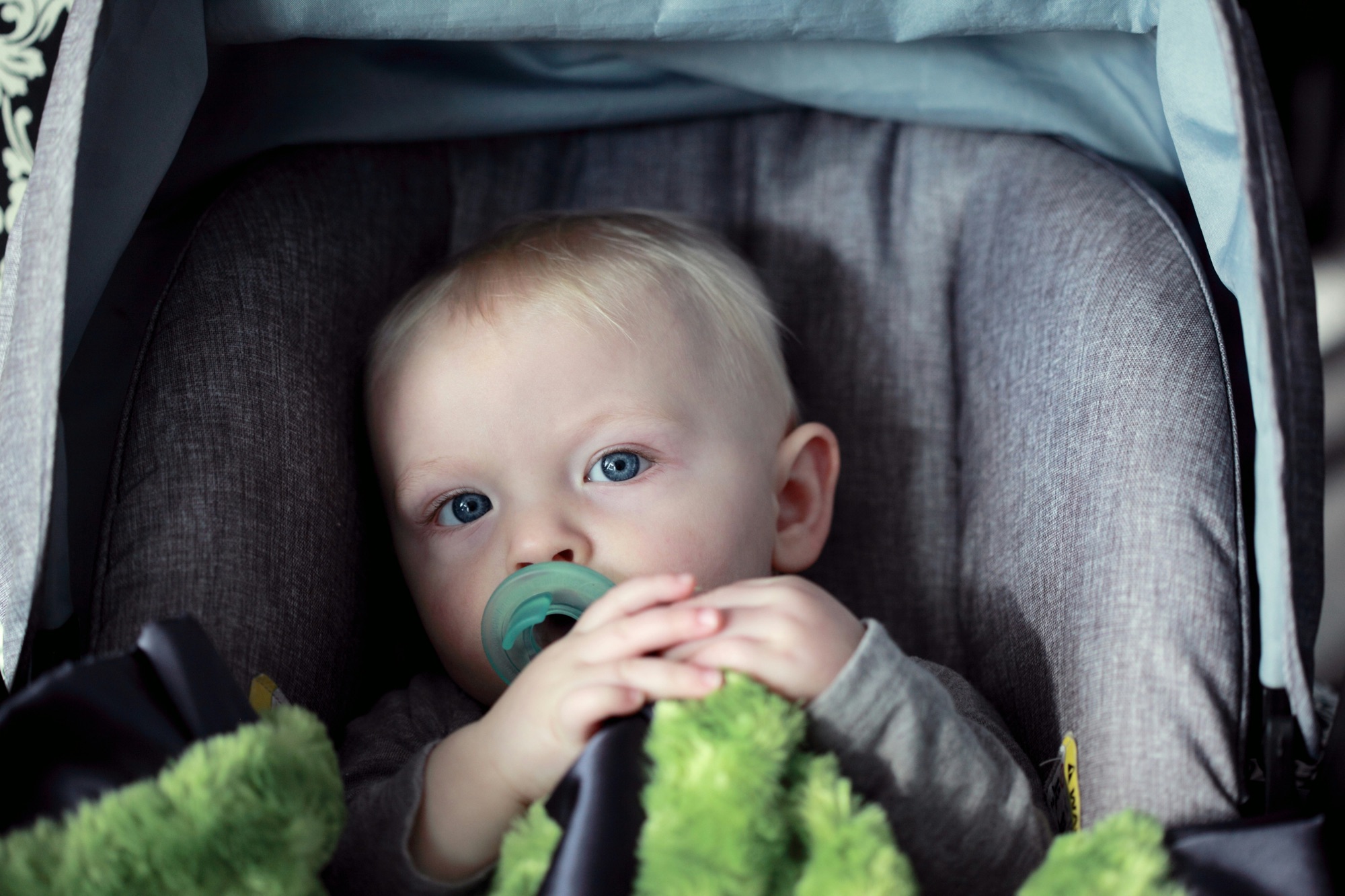Many parents find themselves struggling when their baby cries, fusses, or even screams every time they are placed in a car seat. Car seats are an essential safety tool, but for some babies, they can be a source of distress. It’s natural for parents to feel frustrated or worried when their baby resists the car seat, and it can make even short trips stressful for both the baby and caregiver.
There are several reasons why babies may hate the car seat, ranging from physical discomfort to sensory overload. Understanding the underlying causes can help parents find ways to make car rides more pleasant for everyone. This article explores the most common reasons why babies dislike car seats, as well as strategies to ease their discomfort and make car rides a more enjoyable experience.
1. Discomfort or Physical Issues
The Car Seat May Not Be a Good Fit
One of the most common reasons babies dislike car seats is simple discomfort. Car seats are designed to keep babies safe, but they can sometimes be awkward or uncomfortable, especially if the seat is not properly fitted to the baby’s size and shape. Babies, especially newborns and infants, have sensitive skin, undeveloped muscle tone, and are often not yet able to sit comfortably in a semi-upright position. If the seat isn’t properly adjusted, your baby may feel physically uncomfortable.
What to Check:
- Harness Fit: Ensure the harness is snug but not too tight. The straps should be positioned correctly over the baby’s shoulders and chest, with the chest clip placed at armpit level. Loose straps can make the baby feel insecure, while tight straps may cause discomfort.
- Seat Padding: Some car seats come with padding that can feel bulky or too hard, especially for smaller babies. You can try adding rolled-up blankets on either side of the baby (never behind the baby) for extra support, but always ensure that the car seat meets the safety guidelines.
- Temperature: Car seats can trap heat, making the baby feel too warm or sweaty, especially during long trips or in hot weather. Consider dressing your baby in lighter clothing, and make sure the car’s temperature is comfortable.
Baby’s Position May Feel Restrictive
Car seats, by design, require babies to be restrained for safety. However, this restraint can make some babies feel trapped or restricted. Babies are used to moving freely, kicking their legs, and flailing their arms, but in a car seat, their movement is limited. This sensation can cause frustration, especially for more active or curious babies who dislike being confined.
Potential Physical Discomfort
In some cases, babies may dislike the car seat because of a physical issue like reflux, gas, or colic. The semi-reclined position of the car seat can aggravate symptoms of acid reflux by causing stomach contents to push up into the esophagus, leading to discomfort or pain. Additionally, being tightly buckled in can put pressure on a baby’s stomach, making gas or bloating more uncomfortable.
Signs to Watch For:
- Crying after feeding, especially if placed in the car seat soon after a meal.
- Arching their back or stiffening when placed in the car seat.
- Frequent burping or spitting up while in the car.
If you suspect reflux or another gastrointestinal issue may be causing your baby’s discomfort, consult your pediatrician for advice on how to manage these symptoms. Adjusting the timing of car rides to avoid immediately after feedings or using reflux-friendly feeding positions may help alleviate discomfort.
2. Sensory Overload
Overstimulation in the Car
Babies have much more sensitive sensory systems than adults, and car rides can easily become overstimulating for them. The combination of noise from the engine, the movement of the car, the light from passing scenery, and the visual clutter of the backseat can overwhelm a baby’s developing senses.
For some babies, the constant motion of the car, along with the sounds of the road, may feel chaotic rather than soothing. Unlike the confined, quiet space they experience when being held or in a crib, the car environment is a completely different sensory experience. This sensory overload can lead to fussiness or crying.
Unfamiliar Surroundings
Babies thrive on familiarity and routine. Being placed in a car seat may feel foreign to a baby, especially if car rides aren’t part of their daily routine. The car seat represents a change in environment and can be stressful for babies who are used to being held or moving freely in other spaces. They may react negatively to the change, especially if they haven’t yet learned to associate the car seat with something comforting or predictable.
3. Separation Anxiety and Lack of Comfort
Wanting Physical Contact
In the first few months of life, babies are strongly attached to their caregivers and often feel safest when they are in physical contact with them. Being strapped into a car seat in the backseat, away from the comforting presence of their caregiver, can make babies feel anxious and distressed. Separation anxiety—which often begins around 6 to 8 months of age—can exacerbate this reaction. Babies may cry because they want to be held or reassured by their caregiver’s voice and touch.
Facing Backward
For safety reasons, babies should be in a rear-facing car seat for as long as possible, ideally until they reach the maximum height or weight limit for their seat. However, rear-facing car seats mean that the baby cannot see the parent or caregiver sitting in the front seat. This lack of visual contact can cause anxiety, as babies may feel isolated and wonder where their caregiver is.
4. Timing of Car Rides
Hunger or Tiredness
Sometimes, babies hate the car seat simply because they are hungry, tired, or overstimulated. If your baby is already in need of a nap or a feeding, being placed in a car seat can feel uncomfortable and lead to fussing. Timing car rides around your baby’s schedule—when they are well-fed, rested, and calm—can help prevent meltdowns in the car.
5. Motion Sickness
Sensitivity to Motion
Although rare in very young babies, motion sickness can develop in toddlers and older infants. For some babies, the constant movement of the car, combined with limited visibility from a rear-facing seat, can make them feel dizzy or nauseous. If your baby frequently cries during long car rides and seems uncomfortable, it’s possible that motion sickness could be contributing to their discomfort.
Signs of motion sickness in babies may include:
- Excessive drooling
- Sweating
- Vomiting
- Pallor (looking pale)
How to Help Your Baby Enjoy the Car Seat
1. Ensure Proper Fit and Comfort
The first step to addressing your baby’s discomfort in the car seat is to ensure the seat is properly fitted and adjusted. Make sure the straps are snug but not too tight, the seat is at the appropriate recline angle for your baby’s age, and that your baby has enough head and neck support.
You can also try adding soft, breathable padding (specifically designed for car seats) or using a head support pillow to make the car seat more comfortable. Be cautious not to add anything that wasn’t specifically tested for your car seat model, as this could compromise its safety.
2. Adjust the Car Environment
Making the car environment more soothing for your baby can help reduce sensory overload and anxiety. Consider:
- Using window shades to reduce bright sunlight or visual distractions.
- Playing soft, calming music or white noise to create a more relaxing environment.
- Placing mirrors in the backseat so your baby can see you from their rear-facing car seat, which can help reduce separation anxiety.
3. Incorporate Comforting Items
Bringing along familiar items can help comfort your baby during car rides. Try giving them a favorite blanket, stuffed animal, or pacifier to help them feel more secure in the car seat. Having something familiar can help soothe their nerves and make the car seat feel less foreign or intimidating.
4. Try Shorter Rides First
If your baby struggles with longer car rides, start by taking short trips to get them used to the car seat gradually. Slowly increase the length of time your baby spends in the car seat so they can become more comfortable with the experience. Over time, your baby may begin to associate the car seat with more positive experiences, reducing their overall discomfort.
5. Time Your Trips Carefully
Plan car rides around your baby’s feeding and sleeping schedule. Try to avoid placing your baby in the car seat when they are hungry, tired, or overstimulated. You may find that your baby is more content in the car seat if they are well-fed and rested before getting in the car.
6. Use Positive Reinforcement
Over time, you can help your baby build positive associations with the car seat by giving them praise and attention after successful car rides. Talking to your baby in a soothing voice, singing songs, or offering small rewards (like a favorite toy) can help make car rides feel more enjoyable for your baby.
When to Seek Help
If your baby continues to hate the car seat despite trying different strategies, or if you suspect underlying issues like reflux or motion sickness, it may be helpful to consult your pediatrician. They can offer advice and help identify any physical discomforts or medical concerns that may be contributing to your baby’s distress.
Conclusion
While many babies may dislike the car seat for various reasons, understanding the root cause of your baby’s discomfort is key to helping them feel more comfortable. Whether it’s a matter of adjusting the car seat for a better fit, addressing sensory overload, or managing separation anxiety, there are many strategies you can try to make car rides more pleasant for both you and your baby. With time, patience, and a little creativity, you can help your baby adjust to the car seat and make traveling a more enjoyable experience for everyone.




